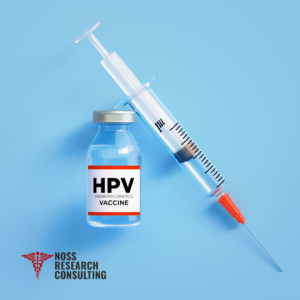The quadrivalent human papillomavirus (qHPV) vaccine has demonstrated remarkable durability in preventing HPV-related diseases, even over a decade after administration. Long-term follow-up (LTFU) studies across diverse populations reaffirm its efficacy, safety, and immunogenicity. Catch-up vaccination initiatives further extend its benefits to older adults, reducing the burden of HPV-related diseases. This blog explores the wealth of evidence supporting the continued use and broader adoption of the qHPV vaccine, emphasizing its pivotal role in preventing HPV-related cancers and diseases.
HPV is extremely prevalent, affecting millions worldwide and posing significant health risks, including various cancers. Vaccination stands as a critical tool in combating HPV-related diseases, with the qHPV vaccine leading the charge. Rigorous LTFU studies underscore its enduring effectiveness, encouraging vaccination even in adults previously exposed to HPV.
Overview of qHPV Vaccine LTFU Data:
Long-term data for the qHPV vaccine observed from 4 different LTFU studies:
- Study 019: Observing vaccine efficacy in women ages 27-45
- Study 020: Studying vaccine efficacy in young men
- Study 015: Analyzing vaccine efficacy in young women
- Study 018: Exploring vaccine efficacy in boys and girls ages 9 -15
The LTFU data from qHPV vaccine trials paint a compelling picture of its long-term benefits:
- Study Design: Rigorous trials spanning 10-14 years evaluated the vaccine’s efficacy across diverse populations.
- Effectiveness: Per-protocol analyses reveal minimal breakthrough disease, indicating robust protection against HPV-related lesions.
- Catch-up Vaccination Groups (CVGs): Insights gleaned from CVGs highlight the vaccine’s efficacy even after delayed administration.
- Serologic Evidence: Evidence suggests that the vaccine confers protection even in individuals with prior HPV infection, reducing the risk of subsequent diseases.
- Antibody Persistence: Long-term antibody persistence reinforces the vaccine’s lasting impact, ensuring sustained protection against HPV.
- Safety Profile: Consistent safety profiles underscore the vaccine’s reliability and suitability for widespread use.
Key Findings Within qHPV Studies:
The LTFU data herald a new era in HPV prevention, offering hope and reassurance:
- Durable Prevention Across Populations: The vaccine’s effectiveness spans diverse demographics, offering durable protection against HPV-related diseases.
- Clinical Implications: Insights gleaned from CVGs inform clinical decisions, advocating for catch-up vaccination initiatives in at-risk populations.
- Age Considerations: Age should not be a barrier to vaccination, with catch-up programs extending protection to older adults.
- Benefit in Low-Resource Settings: Vaccination initiatives in low-resource settings hold immense potential in curbing HPV-related diseases, offering a lifeline to underserved communities.
The qHPV vaccine’s enduring effectiveness heralds a paradigm shift in HPV prevention:
- Embracing Catch-up Vaccination: Catch-up programs bridge gaps in vaccination coverage, safeguarding individuals across the lifespan.
- Empowering High-Risk Populations: Targeted vaccination initiatives prioritize at-risk populations, mitigating disparities in HPV-related disease burden.
- Integrating Screening and Vaccination: Synergistic approaches combining screening and vaccination promise to revolutionize HPV prevention efforts.
- Global Impact: The qHPV vaccine’s global impact extends far beyond its initial scope, transforming the landscape of HPV-related disease prevention.
The qHPV vaccine stands as a beacon of hope in the fight against HPV-related diseases. Decades of research underscore its enduring effectiveness, paving the way for a future free from the burden of HPV-related cancers and diseases. As we continue to leverage the power of vaccination, we move closer to a world where HPV is no longer a threat, but a relic of the past.
Source: Stephen E. Goldstone

